Have you ever wondered how pot stickers got their name? Most of us know them as a dumpling that’s panfried in a skillet, not a pot. For years I thought about why the heck the dumplings are called pot stickers. My Chinese language is passable in a charming pinch but doesn’t come to me in a flash. It took me a while before I realized that the dumpling’s Chinese name, guotie literally means “wok stick.”
It totally jives with the dumpling’s legend, which dates pot stickers back to the Song Dynasty (960 – 1280 A.D.). They were initially regular boiled dumplings cooked in a wok (guo) – the go-to Chinese cooking pot. A chef who was boiling dumplings forgot about them and after the water had boiled away, the dumplings stuck (tie). Not knowing what to do, he pried the dumplings from the wok and served them.
His guests loved the contrasts between rich filling, tender skin, and crusty bottom. Thus the pot sticker was born. Over the years, the Mandarin name for pot sticker, guotie, stuck and was translated into English as pot sticker since woks are the basic pot in a Chinese kitchen.
So how do you cook pot stickers in a wok? I’ve tried several times over the years and the results were so so. Recently, I had a little dumpling epiphany.
I decide to make a classic pot sticker. I filled homemade wrappers with a pork and napa cabbage mixture (see page 31 of Asian Dumplings). Then I shaped them as pleated crescents.
When it was time to cook, I got out my trusty wok. Figuring that water and fuel may have been scarce resources in the Song Dynasty, I heated about ¾ inch of water, covering the wok with its domed lid to quickly bring things to a boil. I put a half dozen dumplings in. The dumplings weren’t submerged, and replacing the lid was my solution to exposing the upper part of the dumplings to the steaming water’s moist heat. In the past, I didn’t use the lid and had a lot more water in the wok.
Then I went about doing other things in the kitchen, like make the dipping sauce and cleaning up, ostensibly what the Chinese chef may have done. My wok lid is not tight and the water boiled away relatively quickly – in less than 10 minutes. When I checked on the wok, the dumplings were definitely cooked and the bit of remaining liquid was foamy and thick.
The wok was on my biggest burner and soon, there was no liquid left. Smoke began coming up, and I took the wok off the heat. I poked and the dumplings wouldn’t budge. I drizzled in oil, then replaced the wok on the burner over medium heat. No lid used this time.
The dumplings gently sizzled and after a few minutes, I slid a thin spatula under each one. With little push, they all lifted from the wok. The crisp bottoms were lovely.
Frankly, I was sweating it a bit because I usually cook pot stickers in a nonstick or cast-iron skillet. I was relieved that the well-worn wok came through for me and our lunch. The bottoms were unevenly browned, rustic looking. They tasted divine, though they were a little more tender than usual because they partially boiled in all that water I put in the wok.
For a comparison, I panfried some of the dumplings in a heavy nonstick skillet like I typically do. Here’s how the two kinds compared:
The skillet-cooked pot stickers on the left had much more evenly browned bottoms. The wok-cooked pot stickers were browned unevenly. You can’t see it, but the wok dumplings also sagged a bit due to the boiling method of cooking.
If the wok worked well enough, why switch to a skillet? You can only cook so many pot stickers at a time in a wok because of the small space at the bottom for browning them. Skillet and other cooking vessels with broad flat surfaces can accommodate a lot more. Panfrying bigger batches means you get to savor more dumplings faster. Who doesn’t love that? I’m all for it.
P.S. Rest in peace, Lou Reed.
Related posts:
- Nonstick Wok Recommendations
- 9 Recipes for Wok Workouts
- Tips and ideas for dumplings without eggs or pork
- Pot sticker duck tacos (a delicious way to use purchased pot sticker wrappers)
Note: A version of this post recently appeared on the Craftsy blog.













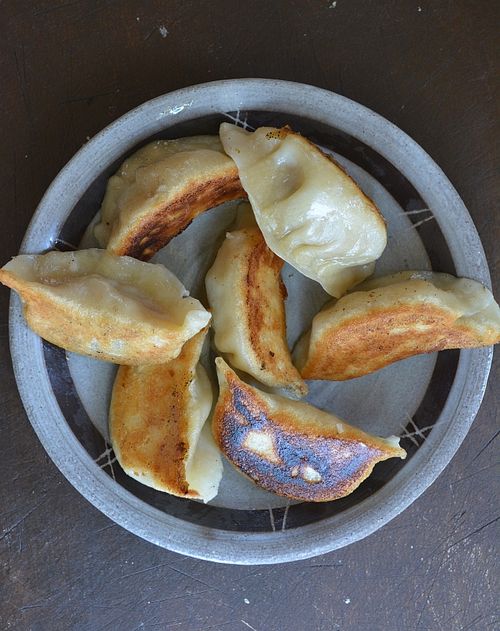
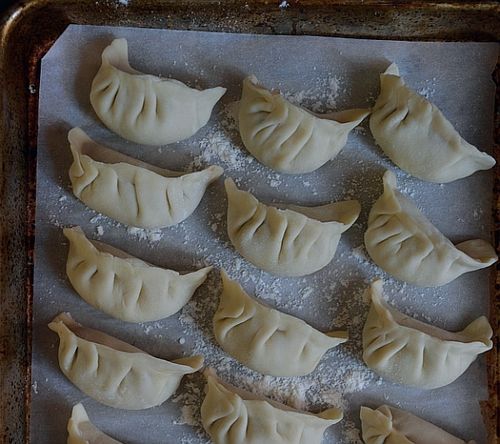
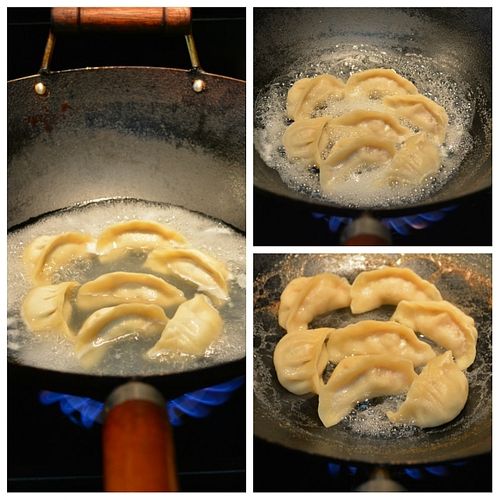
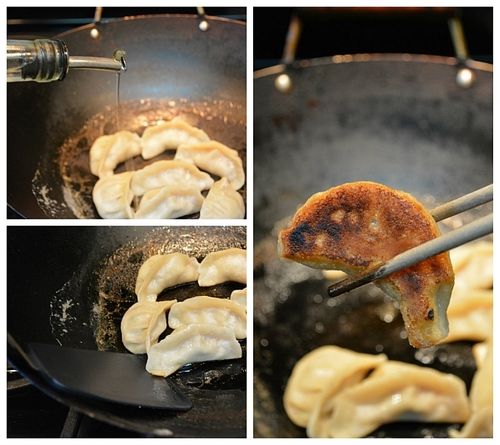
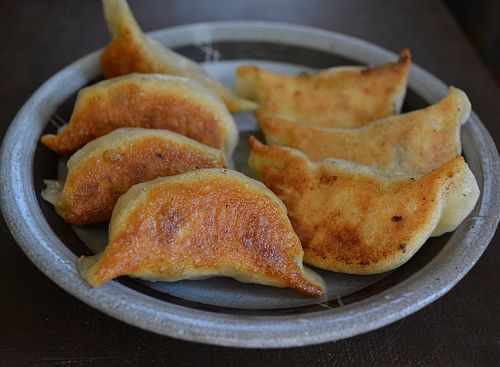




Elmo says
Well technically it's 鍋 (wo1, pot/caldron) not 鑊 (wok6, wok) but yeah
Andrea Nguyen says
Thanks for the pass, Elmo!
Anne Mendelson says
Dear Andrea -- I love your books and this site! My knowledge of Chinese characters is minimal, but I think Elmo is right -- the second character, pronounced "huo" in Mandarin, corresponds to Cantonese "wok." The first character ("guo") in Mandarin) is a more general word for cooking vessels.
Anne Mendelson
Phil mahooters says
Will u take a wok on the wild side with me
Andrea Nguyen says
Ha! With that kind of humor, you're good to go!